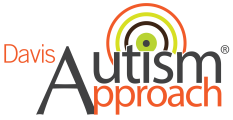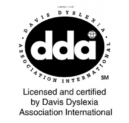
As a young parent, I remember wondering if I was doing a good job preparing my children for reading. I started this preparation before they were even born reading to my belly and playing Beethoven for Babies with headphones resting on my belly. We all want to “get it right”, to give our children the best possible advantages for early success.
What we often forget is how different each child is and that they don’t all develop at the same rate. I saw this first hand with my first two children. My son wasn’t interested in sitting still and learning while my daughter would sit for long periods of time soaking up every bit of information we would give her. Some would say that is the difference between boys and girls and others would say it was an early warning sign that my son would be a struggling reader and dyslexic.
What is “normal” and what isn’t when it comes to learning to read? This is a question I get often. When is it time to be concerned? I read and researched many sites to bring the information on both questions to you in the best way possible.
I would ask that while reading this piece that you remember my above statement that all children develop at their own rate and what is “normal” for some children isn’t the case across the board. In researching and reading to gather information for this blog it was obvious that the milestones listed are what is expected for the general population in school systems.
First, we will look at what the “normal” path is for the stages of reading by specific age groups.
Listed below are the reading milestones laid out in an article from Understood.org.
Babies (0–12 months)
- Begin to reach for soft-covered books or board books
- Look at and touch the pictures in books
- Respond to a storybook by cooing or making nonsense sounds
- Help turn pages
Toddlers (Ages 1–2 years)
- Look at pictures and name familiar items, like dog, cup, and baby
- Answer questions about what they see in books
- Recognize the covers of favorite books
- Recite the words to favorite books
- Start pretending to read by turning the pages and making up stories
Preschoolers (Ages 3–4 years)
- Know the correct way to hold and handle a book
- Understand that words are read from left to right and pages are read from top to bottom
- Start noticing words that rhyme
- Retell stories
- Recognize about half the letters of the alphabet
- Start matching letter sounds to letters (like knowing b makes a /b/ sound)
- May start to recognize their name in print and other often-seen words, like those on signs and logos
Kindergartners (Age 5 years)
- Match each letter to the sound it represents
- Identify the beginning, middle, and ending sounds in spoken words like dog or sit
- Say new words by changing the beginning sound, like changing rat to sat
- Start matching words they hear to words they see on the page
- Sound out simple words
- Start to recognize some words by sight without having to sound them out
- Ask and answer who, what, where, when, why, and how questions about a story
- Retell a story in order, using words or pictures
- Predict what happens next in a story
- Start reading or asking to be read books for information as well as entertainment
- Use story language during playtime or conversation (like “I can fly!” the dragon said. “I can fly!”)
Younger Grade-Schoolers (Ages 6–7 years)
- Learn spelling rules
- Keep increasing the number of words they recognize by sight
- Improve reading speed and fluency
- Use context clues to sound out and understand unfamiliar words
- Go back and re-read a word or sentence that doesn’t make sense (self-monitoring)
- Connect what they’re reading to personal experiences, other books they’ve read, and world events
Older Grade-Schoolers (Ages 8–10 years)
- In third grade, move from learning to read to reading to learn
- Accurately read words with more than one syllable
- Learn about prefixes, suffixes, and root words, like those in helpful, helpless, and unhelpful
- Read for different purposes (for enjoyment, to learn something new, to figure out directions, etc.)
- Explore different genres
- Describe the setting, characters, problem/solution, and plot of a story
- Identify and summarize the sequence of events in a story
- Identify the main theme and may start to identify minor themes
- Make inferences (“read between the lines”) by using clues from the text and prior knowledge
- Compare and contrast information from different texts
- Refer to evidence from the text when answering questions about it
- Understand similes, metaphors, and other descriptive devices
Middle-Schoolers and High-Schoolers
- Keep expanding vocabulary and reading more complex texts
- Analyze how characters develop, interact with each other, and advance the plot
- Determine themes and analyze how they develop over the course of the text
- Use evidence from the text to support analysis of the text
- Identify imagery and symbolism in the text
- Analyze, synthesize, and evaluate ideas from the text
- Understand satire, sarcasm, irony, and understatement
You’ve read through the list, maybe your child has met all, some or none of these milestones and now the question is, “When should I be concerned?”.
For my son, the problem wasn’t glaringly apparent until 2nd grade. Although, as I look back I can remember that he struggled with rhyming and what letter words began with. Which signs sent me looking for help? My son would read well one day and terrible the next. He would omit small words or call them something very different, for the word “the” he would say, “and”. I won’t lie there were times I believed that he was just trying to make me crazy or get out of reading altogether! When I found the book The Gift of Dyslexia I felt both relieved and saddened. Relieved that we had an answer and saddened that I had pushed my son so hard thinking that he just wasn’t trying hard enough! I wish that I had read a post like this one that would have helped me to understand the early signs.
7 Early Signs Your Child May Have a Reading Issue
An article from Brightly.com
1. Doesn’t remember letter sounds (/a/ as in apple). If the phonemes (i.e., sounds) of letters aren’t sticking in a child’s long-term memory, it may indicate a processing issue, an auditory problem, or another learning challenge.
2. Confuses look-alike letters (b / d / p) or sound-alike letters (f / v; d / t). While it’s perfectly normal for beginners to reverse and rotate letters, as children develop an understanding of language, these errors should go away.
Understood.org — one of the best websites for information on dyslexia — explains that, after age 7, if a child is still confusing letters, it’s a red flag for a bigger learning issue. For example, a person with dyslexia can’t connect the visual representation of language (the letter b or p) to the sounds the language makes (/b/ as in bear versus /p/ as in pear). Hence the frequent confusion when writing bs and ps.
3. Has difficulty rhyming words (bat / cat / mat). The ability to rhyme shows that a child can hear language. Practice with your child and help her work on this skill. If you notice your child continuing to struggle after intervention and practice, the cause may be an inability to process the sounds of language (dyslexia) or apraxia of speech, which is a motor speech disorder.
4. Doesn’t remember sight words. Just like flashcards are meant to trigger your knowledge in a “flash,” sight words are words kids should recognize instantly. Sight words are those most commonly used in the English language, such as “the,” “a,” “her,” “to,” “it,” “was,” and “for.” Children learn these sight words so that they can easily read sentences without having to stop and sound out common words each time they encounter them. In fact, “sight” words is a bit of a misnomer: so important is it for children to speedily grasp these words that teachers use a variety of multi-sensory recall techniques, including tactile, visual, and kinesthetic approaches to mastery.
Retrieval of sight words does takes practice. If, after ample repetition, your child still can’t remember basic sight words, it could indicate dyslexia, an auditory processing problem, or a visual perception disorder.
5. Omits word endings such as -s, -ing, or -ed. If you notice a significant difference between your child’s speech and that of her peers — such as not reading the endings of words — it could indicate a phonological or articulation disorder, apraxia, or dyslexia. Ask your child’s teacher if he or she notices this, too.
6. Poor memory. Cannot remember what he reads or what was read to him earlier in a story. Children whose brains process slowly, or who have attention issues, can easily lose the thread of a story. If it takes too long to decode the words on the page, the meaning of those words gets lost — and then the child can’t remember what happened. Sometimes the child’s attention simply wanders to something else.
Differences in the neurological processes of working memory, long-term memory, and output of information can all contribute to forgetting what one has read. (This can also be a sign of dyslexia.)
7. Spells the same word differently within the same document. Usually, children misspell a word consistently. When my kids used to spell because “beacuz,” I didn’t worry much, because it was consistent: The error was always the same. But when children use different variations of a misspelled word — “bekus,” “beacuz,” and so forth — it can indicate either a writing disorder called dysgraphia or a language-based issue like dyslexia.
Rio Grande Learning Solutions has a program to help no matter which stage you are in!
The next steps will depend on where you are in your journey meaning, how old is your child and which symptoms you are seeing in your child.
If you have a child between the ages of 5-7 and are noticing a few of the key signs and maybe Dyslexia runs in your family a Davis Reading Program for Young Learners is a fantastic fit! The Davis website says this about the program: “Strong research evidence suggests that children who are exposed to Davis methods at pre-reading or primary level (age 5-7) benefit in the following ways:
- They are highly unlikely to develop a learning difficulty.
- They are significantly more likely to qualify for gifted program referrals.
- Their basic word recognition will be among the highest levels expected for their age group.”
Had I been told that I could head off the learning difficulties and emotional strain that my son experienced at the age of 5 I would have jumped on it!
Is your child older?
A Davis Program is a great start to overcoming learning struggles! The Davis® Dyslexia Correction Program is designed for individuals 8-108 yrs old. A multi-sensory approach to overcoming reading and attention difficulties, the Davis methods use the individual’s unique learning style along with self-regulation tools building academics and confidence. Delivered in a one-on-one setting with a highly trained Davis Facilitator this method is used worldwide with great success!
Are you wondering if what is going on with your child is an actual learning disability, possibly dyslexia? You can take the Is it Dyslexia Quiz here! In my blog post, Is it a Learning Disability I talk about when to seek an official diagnosis and when other types of interventions are the best route to take. The quiz gives you a starting point and although it is not an official diagnosis it’s results can help with making the decision for the next steps. Maybe instead of spending money on a diagnosis that already seems clear your dollars would be better spent on intervention.
“Sometimes the questions are complicated and the answers are simple.” Dr. Seuss



